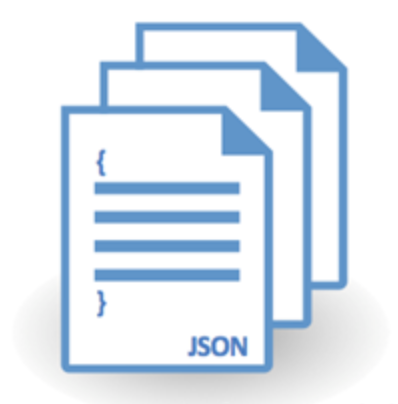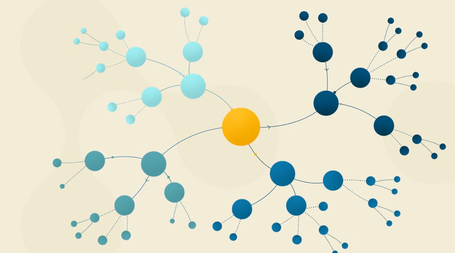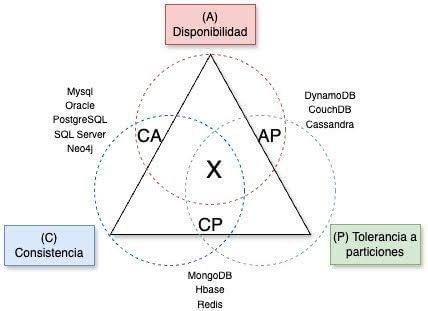SQL and NoSQL represent two different approaches to storing, querying, and scaling data. While SQL relies on relational models with fixed structures and transactional consistency, NoSQL offers flexible schemas, distributed performance, and horizontal scalability. Choosing between the two can make the difference between a scalable, resilient, and efficient system—or one that’s costly and hard to maintain. So, which one should you choose?
In this article, we’ll explore in depth what SQL and NoSQL are, their key differences, advantages, disadvantages, and—most importantly—when to use each one. This guide is designed to help you make informed decisions based on the specific needs of your projects.
SQL: Relational Databases
Relational databases have been the cornerstone of enterprise systems for decades. They use a tabular structure that enforces rigid schemas and relationships between tables through primary and foreign keys.
Key Characteristics
SQL databases organize data into tables composed of rows and columns, following a structured and well-defined model. They use SQL (Structured Query Language) to manage and query data, enabling complex and precise operations. Each table has a fixed schema, meaning each column has a specific data type, which enforces model integrity.
These databases ensure referential integrity via primary and foreign keys and support ACID transactions, which guarantee reliable data handling.
Popular examples of SQL systems include MySQL, PostgreSQL, Oracle, and SQL Server.
Advantages of SQL
- Great for structured data and complex relationships: precisely model connected entities using primary and foreign keys.
- Secure and consistent transactions: ACID properties ensure data integrity even in critical operations.
- Mature ecosystem, robust support, and tools: strong ecosystem for monitoring, backup, replication, and analysis.
- Ideal for financial systems, ERPs, CRMs, and reporting platforms: environments requiring accuracy, auditing, and historical integrity.
Disadvantages of SQL
- Limited horizontal scalability: primarily designed for vertical scaling (upgrading server hardware), which can be expensive and limited for high-volume environments.
- Rigid schema: changes to data structure require structured migrations that can affect system availability.
- Less flexible for unstructured data: handling dynamic content like JSON documents, events, or logs requires pre-processing.
- Overhead in distributed environments: distributing and syncing data across multiple nodes is complex and costly in terms of implementation and maintenance.
NoSQL: Non-relational Databases
NoSQL is a broad term that refers to databases that don’t follow the traditional relational model. It emerged in response to the new demands of large-scale web applications, big data, and dynamic data structures.
Types of NoSQL Databases
- Document Stores
Store data in structures similar to JSON or BSON documents. Ideal for web or mobile apps where data is hierarchical and changes frequently.
Example: MongoDB is commonly used for blogs, CMS platforms, and product catalogs.

- Key-Value Stores
Data is stored as key-value pairs. Their simplicity makes them extremely fast and highly scalable.
Example: Redis or DynamoDB are used for managing user sessions, caching, or shopping carts.

- Columnar Databases
Store data by columns instead of rows, optimizing analytical queries and large-scale aggregation.
Example: Cassandra or HBase are common in log analysis, sensor data metrics, and recommendation engines.
Coming from a row-oriented DB, it might look like:
| Name | Address | City |
|---|---|---|
| Pedro | Avenida América | Madrid |
| Antonio | Calle Molinillo | Valladolid |
| Iñaki | Plaza España | Bilbao |
The same information in a columnar database would be:

- Graph Databases
Specialized in representing complex relationships between entities. Commonly used in social networks, recommendation engines, or fraud detection.
Example: Neo4j allows modeling users, interactions, relationships, and preferences in social networks or e-commerce.

Key Characteristics
NoSQL databases offer a flexible data model that does not require a fixed schema, making them especially suitable for handling semi-structured or unstructured data. They are designed for horizontal scaling, meaning they can distribute data and workloads across multiple nodes or servers with ease.
Unlike relational databases, they prioritize availability and performance, adopting a more flexible approach to data synchronization under the BASE model.
Advantages of NoSQL
- Ideal for Big Data, IoT, and social networks: can handle large volumes of changing data structures.
- High availability and performance: many NoSQL engines are optimized for continuous availability and fast writes.
- Flexible with semi-structured or unstructured data: no need to define a rigid schema, which speeds up development.
- Easy horizontal scalability: nodes can be added without redesigning architecture—perfect for cloud-native and distributed systems.
Disadvantages of NoSQL
- Often lacks strong consistency (BASE model): NoSQL prioritizes availability and scalability, which may lead to data not being instantly synchronized across all nodes. Unlike SQL's ACID model that enforces strong consistency by default, NoSQL often follows eventual consistency. Some modern solutions like MongoDB or Cassandra offer mechanisms to strengthen consistency, but this may involve performance or availability trade-offs. In distributed systems, eventual consistency may result in intermediate or delayed reads, which can be unacceptable for critical apps.
- Limited support for complex queries (joins, aggregations): many NoSQL engines lack native operators for joining data across collections, requiring logic to be handled at the application level.
- Weaker transactional support: while some engines have added transaction support, it is often limited to specific contexts and is not as mature or widely adopted as in SQL.
- More effort required for modeling and relationship management: without a formal relationship system, development teams must anticipate access patterns and duplicate data for optimal reads, complicating long-term maintenance.
- Greater variability between engines: not all NoSQL systems offer the same feature set, which can mean a steeper learning curve and vendor lock-in.
ACID vs BASE: Consistency vs Availability
One of the most important concepts in understanding SQL vs NoSQL is the transaction model they use. These reflect philosophically different approaches to data management in complex systems.
ACID (SQL)
- Atomicity: each transaction is all-or-nothing.
- Consistency: the database moves from one valid state to another, preserving integrity rules.
- Isolation: concurrent transactions don’t interfere with each other; the result is as if executed sequentially.
- Durability: once committed, changes persist even in case of system failure.
The ACID model is crucial for accuracy and reliability in critical applications such as banking, accounting, or airline bookings.
BASE (NoSQL)
- Basically Available: the system responds to every request, even if it may not contain the latest data.
- Soft state: the system state may change over time due to eventual synchronization.
- Eventually consistent: data will become consistent over time, though not immediately.
The BASE model favors availability and fault tolerance. It's well-suited for distributed systems where uptime is more important than instant consistency—ideal for platforms like social networks, streaming services, product catalogs, or real-time dashboards.
CAP Theorem: Understanding Distributed System Trade-offs
Proposed by Eric Brewer, it states that in a distributed system, it's impossible to simultaneously guarantee the following three properties:
- Consistency: all nodes see the same data at the same time.
- Availability: every request receives a response—even if some nodes are down.
- Partition Tolerance: the system continues functioning even with communication breakdowns between nodes.
According to the theorem, when a network partition occurs (common in distributed systems), you must choose between consistency and availability. This results in three types of systems:
- CP (Consistency + Partition Tolerance): maintains data integrity but may reject requests during partition. E.g., financial systems.
- AP (Availability + Partition Tolerance): ensures quick responses even if data isn't fully synchronized. E.g., social media.
- CA (Consistency + Availability): only possible without partitions—in centralized systems like monolithic servers.

Understanding these differences will help you design more robust systems, making conscious decisions about when to trade off consistency for performance or availability—and vice versa.
Use Cases: When to Choose Each
When to Use SQL
SQL is a great choice when you're working with highly structured data and complex relationships between entities. It’s the preferred option when you need transactional operations that must ensure full consistency, such as in financial, legal, or enterprise resource planning systems.
If your app requires rich reporting with aggregations, cross-filters, or multi-entity queries, relational databases provide powerful tools and optimized performance for such operations.
Another strong point is the need for auditing, historical tracking, and data versioning, where SQL excels with its mature mechanisms for maintaining integrity and traceability.
When to Use NoSQL
NoSQL is ideal when building modern, highly scalable applications where the data structure might be changing or undefined at first.
If your system serves millions of users with low latency, such as mobile apps, streaming platforms, real-time chats, or event logs, NoSQL fits better thanks to its ability to scale horizontally.
This approach is also perfect for cloud-native and distributed environments, where availability and fault tolerance are critical. If you're dealing with unstructured or semi-structured data (like JSON documents, logs, or telemetry), or you simply need speed over strict consistency, NoSQL offers key advantages in agility and performance.
Practical Example: Designing an Online Store
To better understand the difference between SQL and NoSQL, imagine an online store that needs to handle users, orders, products, discounts, and recommendations.
This application must be capable of registering new purchases, showing a user's order history, applying coupons, checking stock in real time, and suggesting related products.
- In SQL:
USERS (id, name, email)
PRODUCTS (id, name, price, stock)
ORDERS (id, user_id, date)
ORDER_ITEMS (order_id, product_id, quantity, unit_price)
COUPONS (id, code, discount_percent, valid_until)
RECOMMENDATIONS (product_id, recommended_product_id)
In this relational design, each entity is normalized into its own table. ACID transactions ensure integrity in complex operations: for example, when registering an order, you can verify if a coupon is valid, update the product stock, and record the final total atomically. Additionally, JOINs allow the generation of reports, such as top-selling products by category or most active customers per month. This approach is ideal when data integrity is a top priority.
- In NoSQL (MongoDB):
{
"userId": "123",
"name": "Ana",
"orders": [
{
"date": "2024-03-10",
"couponCode": "BIENVENIDA20",
"items": [
{ "productId": "p01", "name": "Teclado", "price": 25.00, "quantity": 1 },
{ "productId": "p02", "name": "Mouse", "price": 15.00, "quantity": 2 }
],
"total": 51.00
},
{
"date": "2024-03-15",
"items": [
{ "productId": "p03", "name": "Monitor", "price": 150.00, "quantity": 1 }
],
"total": 150.00
}
],
"recommendations": [
{ "productId": "p01", "suggested": ["p03", "p04"] }
]
}
In a document-oriented model like MongoDB, you can embed multiple orders and recommendations inside the user document. This allows for fast access to order history and product suggestions without multiple queries.
It's ideal when the most common operations are user-personalized, such as "view history" or "recommend products based on previous purchases." However, this structure implies data duplication (like product details), which requires a clear strategy if that information changes (e.g., product price or name). It also demands additional logic if you need to validate stock in real time or share information across documents.
This example shows how both models offer advantages depending on the approach: SQL prioritizes integrity, rich queries, and consistent operations; NoSQL, on the other hand, optimizes user experience with flexible and fast structures for common reads.
Viability, performance and system evolution
- Short-term viability
While the choice between SQL and NoSQL depends on many project-specific factors, NoSQL often provides more flexibility during early development or prototyping phases, thanks to its flexible schema—especially useful in startups or MVPs requiring agility and frequent model changes.
SQL, by contrast, requires a more structured design from the start, which may mean a higher initial investment but brings long-term stability.
- Operational performance
SQL performs better in complex transactional operations (as long as it’s properly optimized), where integrity and consistency are non-negotiable, such as in payments or inventory management.
NoSQL excels at simple, large-scale queries, such as searches, recommendations, or activity logs.
- System evolution
In systems that grow in a controlled way and require detailed reporting, SQL maintains a robust, auditable structure.
NoSQL facilitates horizontal scaling without redesigning architecture, ideal for global, distributed, or constantly growing systems.
- Maintenance and governance
SQL benefits from decades of maturity in monitoring, backup, and compliance tools. NoSQL offers more freedom, but also requires more manual control over schema evolution and data access patterns.
Both models can coexist in modern architectures. For example, an e-commerce platform could use SQL for the transactional backend (orders, payments, stock) and NoSQL for personalized recommendations, logs, or browsing history.
Performance and scalability
Performance and scalability are key factors when choosing a database system, as they determine how well the architecture can handle growth.
In SQL
As mentioned earlier, SQL databases mainly scale vertically, which means increasing the capacity of a single server—more CPU, RAM, or storage. While effective to a point, it can be costly and has physical limits.
SQL shines in scenarios where transactions must be fast and precise under strict rules. Though modern SQL solutions support replication and clustering, horizontal scalability is still more challenging compared to NoSQL. On the plus side, SQL provides excellent performance in complex operations, especially when using well-optimized indexes.
In NoSQL
NoSQL was designed from the ground up with horizontal scalability in mind, meaning data can be distributed across many servers or nodes. This makes it ideal for distributed architectures that handle data and workloads in parallel.
Many NoSQL engines allow adding new nodes with no downtime, ensuring consistent performance even under exponential growth. Also, by prioritizing availability and low latency, NoSQL is great for real-time applications like online games, monitoring dashboards, recommendation systems, etc.
Conclusion: SQL or NoSQL?
Choosing between SQL and NoSQL should not be seen as a rivalry, but rather as an architectural decision based on technical requirements, data nature, and business context.
Relational databases have proven to be a reliable, mature, and extremely powerful solution when dealing with structured data and business rules that require integrity and consistency. Meanwhile, NoSQL has become an essential ally in distributed systems, where agility, scalability, and adaptability are more important than rigid schemas or immediate consistency.
From my experience as a software architect, I’ve learned that rarely does one approach fit all. Often, a hybrid persistence strategy—using relational databases for transactional logic and NoSQL for analytics, event storage, or caching—results in more balanced, scalable, and maintainable solutions.
The key is to deeply understand the tools, their strengths and limitations, and apply that knowledge to design systems that not only work today but scale for tomorrow.
Quick comparison: SQL vs NoSQL
Lastly, here’s a quick comparison table:
| Feature | SQL (Relational) | NoSQL (Non-Relational) |
|---|---|---|
| Data Model | Tables (rows and columns) | Documents, key-value, graphs, columns |
| Schema | Fixed, structured | Flexible, dynamic |
| Query Language | SQL | Proprietary or APIs (JSON, BSON, etc.) |
| Transactions | ACID (strong consistency) | BASE (eventual consistency) |
| Scalability | Vertical (add resources to a server) | Horizontal (add more nodes or instances) |
| Best suited for | Finance, ERP, CRM, reporting | Big Data, IoT, social networks, mobile apps |
| Data Relationships | Robust support (JOINs, foreign keys) | Manual or embedded relationships |
| Maturity and Tooling | Very high | Varies by engine |
I hope this guide helps you make more informed decisions about databases in your upcoming projects. Let me know your thoughts in the comments! 👇
Recommended Resources
Comments are moderated and will only be visible if they add to the discussion in a constructive way. If you disagree with a point, please, be polite.







Tell us what you think.